Oyster yachts has always been one of the big names in the boating industry and a brand which undeniably has shaped and spearheaded the development of absolutely fine blue water ocean cruisers and luxurious boating. These boats fascinate people all around the world and are considered one of the best choices a sailor could make when it comes to going for the ultimate dream yacht for long haul cruising. After the horrible news of going into administration almost one year ago right after Duesseldorf boat show the company is recovering under the new leadership of Mr. Richard Hadida and I am very honoured of finally getting a chance to talk to the masterminds behind Oyster boats – Rob and Tom Humphreys, the principal naval architects of these fabulous boats.
“We are a compact and dynamic team.”
Lars Reisberg | NO FRILLS SAILING.com: “Rob & Tom, would you please tell us what your respective functions are within your company: Who is responsible for what? And in terms of Oyster Yachts: How does a collaboration with the yard look like, let´s say, when a new boat is due to be developed?”
Rob Humphreys: “We are both heavily involved in all aspects of the yacht design and naval architectural process, including hull lines development. It is good to be able to cross-check back and forth, to discuss nuances of hull shape, volume distribution – all that stuff. With the new company we have also been increasingly involved with the concept development.”
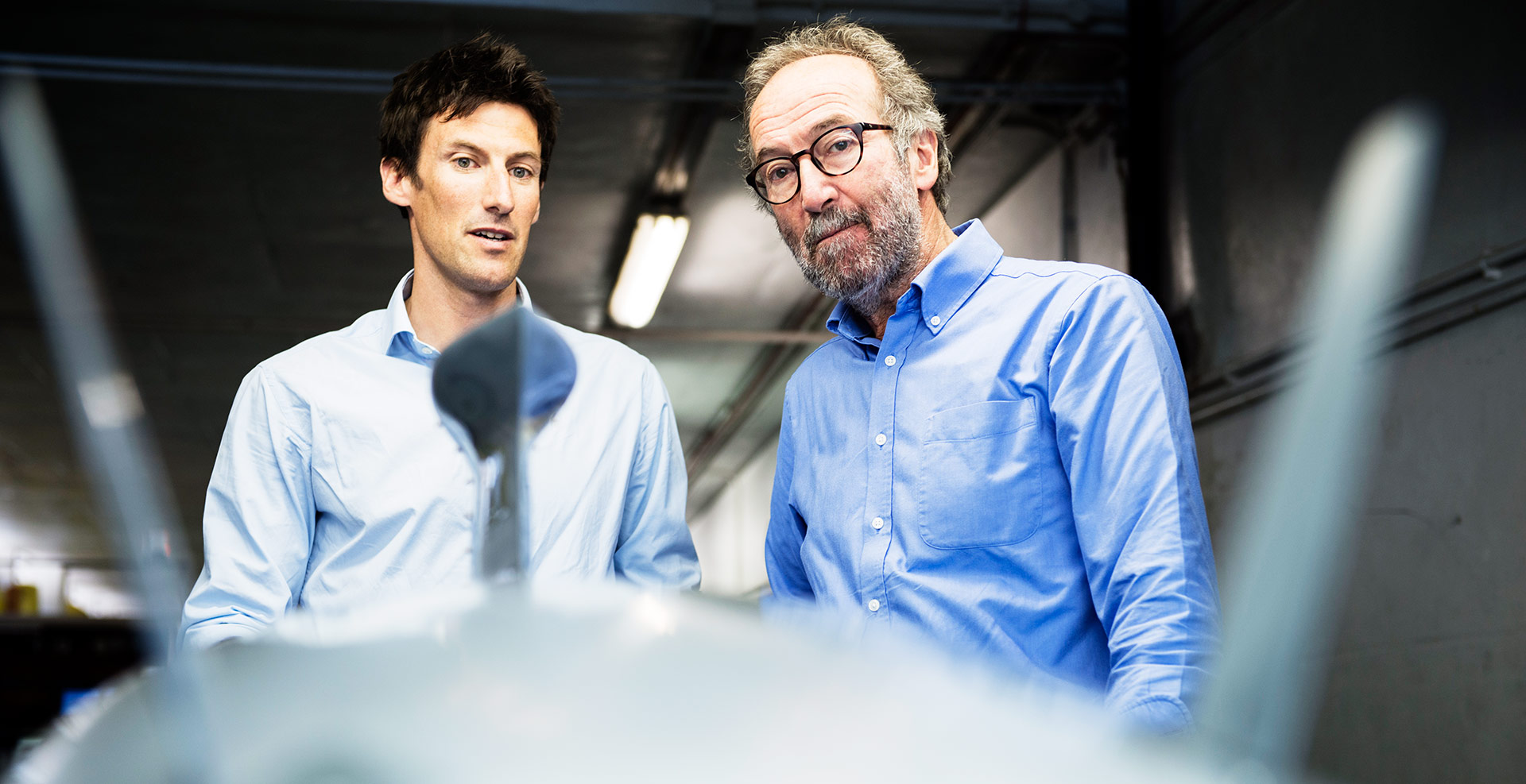
Tom Humphreys: “We are both multi-disciplined in terms of our skillset as designers and we both cover all aspects of hull design, naval architecture and yacht design, but complement each other in many ways. Rob has over 40 years’ experience and with that an extremely intuitive approach to design. I started full-time here twelve years ago at a time of big advancements in design tools and processes and as a result I have developed quite a technical approach. The benefit we find is that this gives us a double perspective on all projects. This multi-disciplined approach runs right through our team here too. We are a compact, dynamic design office and our work across such a multitude of design fields like racing, production, power, et cetera, has always necessitated this.”
NFS.com: “Just in short: After the trouble with the yard going into administration, is everything now in back proper order? Are you having a fresh start with Mr. Hadida and the new team or is everything new in terms of how you work together?”
Rob: “Administration is not an everyday occurrence, so it was hard to know how long it would take, and it’s probably unusual too for a company to enter into it when it has so many boats in build. That said, the new team worked tirelessly to get contracts re-signed and projects under way again. Happily, all but one of these are now back in build and it’s great to hear the bustling noise of boatbuilding activity, which has been going on for a while now, both In Wroxham and Southampton.”
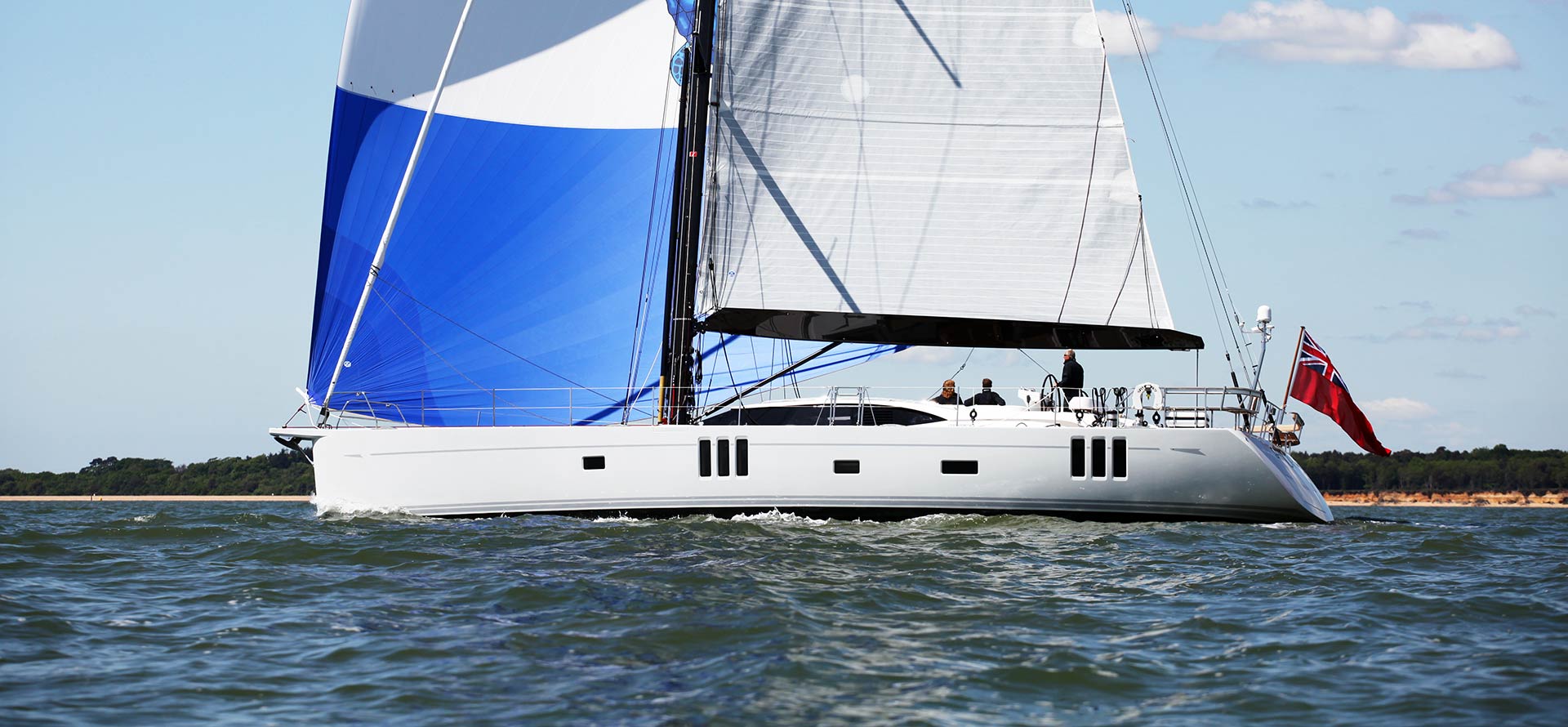
NFS.com: “Can you explain the model policy of Oyster Yachts? With “ordinary” production boats there is usually a small entry-level boat, the “bread-and-butter” line from 38 to 45 feet and the large boats from 50 to 65 feet marking the upper end. With Oyster, of course, the entry level is a bit different: What does that mean for your work as designers?”
Rob: “Richard Hadida has gone on record that he would like to introduce owners to the Oyster experience and lifestyle from a smaller size, and from a design perspective this has been exercising our minds. The plans of the company are dynamic and while there may be some rationalisation of the range it will be no less aspirational to blue water sailors. We certainly see the plans as very exciting indeed.”
“Just only 25 per cent of all Oysters have a permanent mooring.”
NFS.com: “Let´s talk boats. What are the principal differences between an Oyster yacht and other high-quality upper brand-products? Where has Oyster its focus on and what does an Oyster yacht best?”
Rob: “Oyster has always been a blue water marque and I have always thought of an Oyster as a boat that you could take off trans-oceanic tomorrow … after a visit to the supermarket of course. The second Oyster World Rally is going on at the moment, of course, and a statistic I have had quoted to me is that only 25% of Oysters have a permanent mooring. Oyster owners tend to have big plans and they follow through. We haven’t been counting but I believe about 50 of our Oyster designs have circumnavigated the world.”
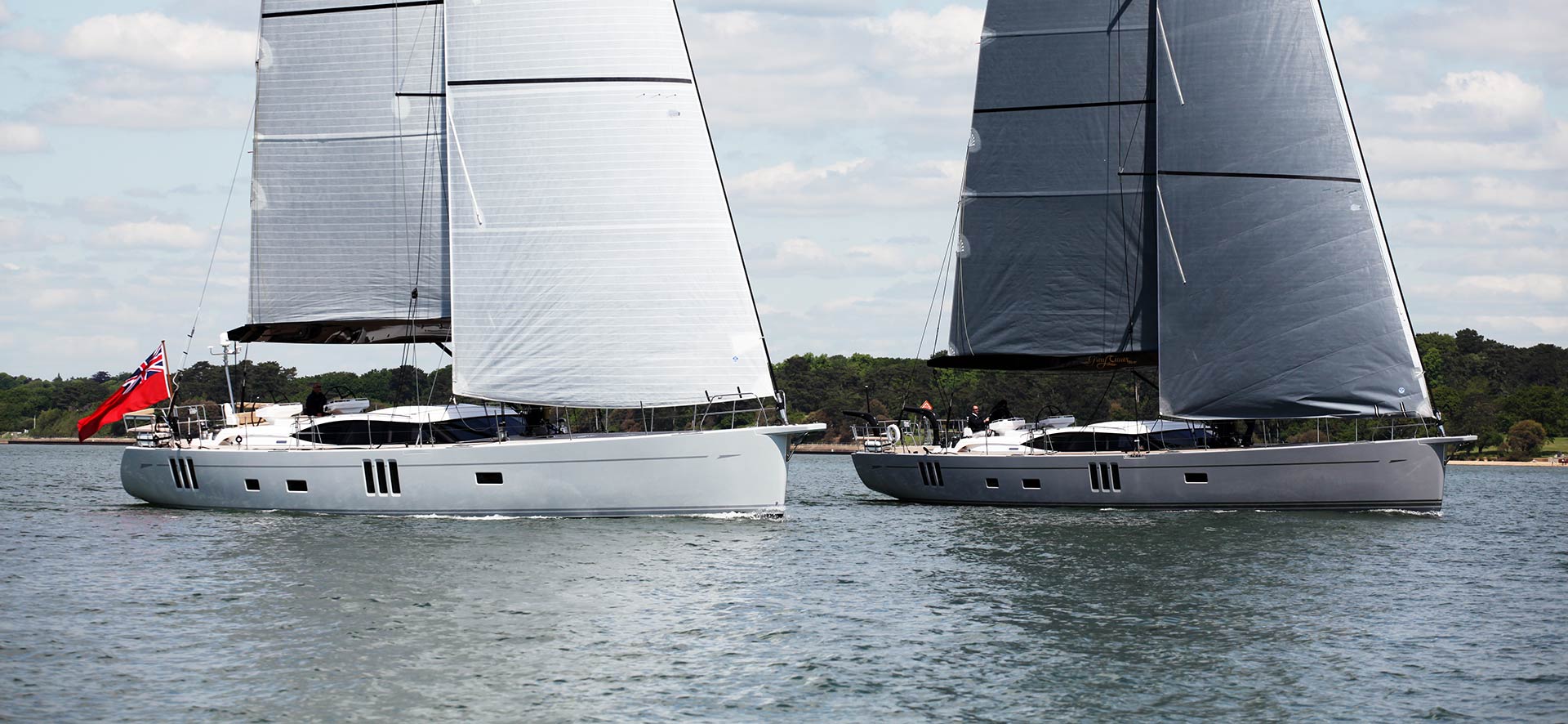
Tom: “The design philosophy behind each Oyster model is very much focused on comfortable, long distance cruising. From a naval architecture perspective it has always been about finding an optimum balance between hull and appendage package and sail plan to produce an easily driven design, with generous stability, but not overly so to keep loads manageable and motions comfortable. And, of course, buying an Oyster is also much more than simply buying a yacht – with ownership comes access to an inequivalent level of after sales care and technical support, as well as being part of an incredibly strong owners’ community and access to regattas and World Rally.”
NFS.com: “What is a modern Oyster, let´s say, the 745, like in terms of sailing characteristics, pointing ability, steering light wind conditions and strong wind conditions and in terms of seakindness/hull design?”
Rob: “We try to keep all these things in balance. An Oyster’s blue water role means it has to be a good load carrier, hence reasonable displacement, and we want to make sure it has good sail carrying power to be able to maintain high passagemaking speeds. The 745 is very much in this vein, well enough endowed with sail area to move well in the light but powerful and stiff when it comes to big breezes. Like the other Oysters it has a stability curve that is way in excess of the regulatory framework.”
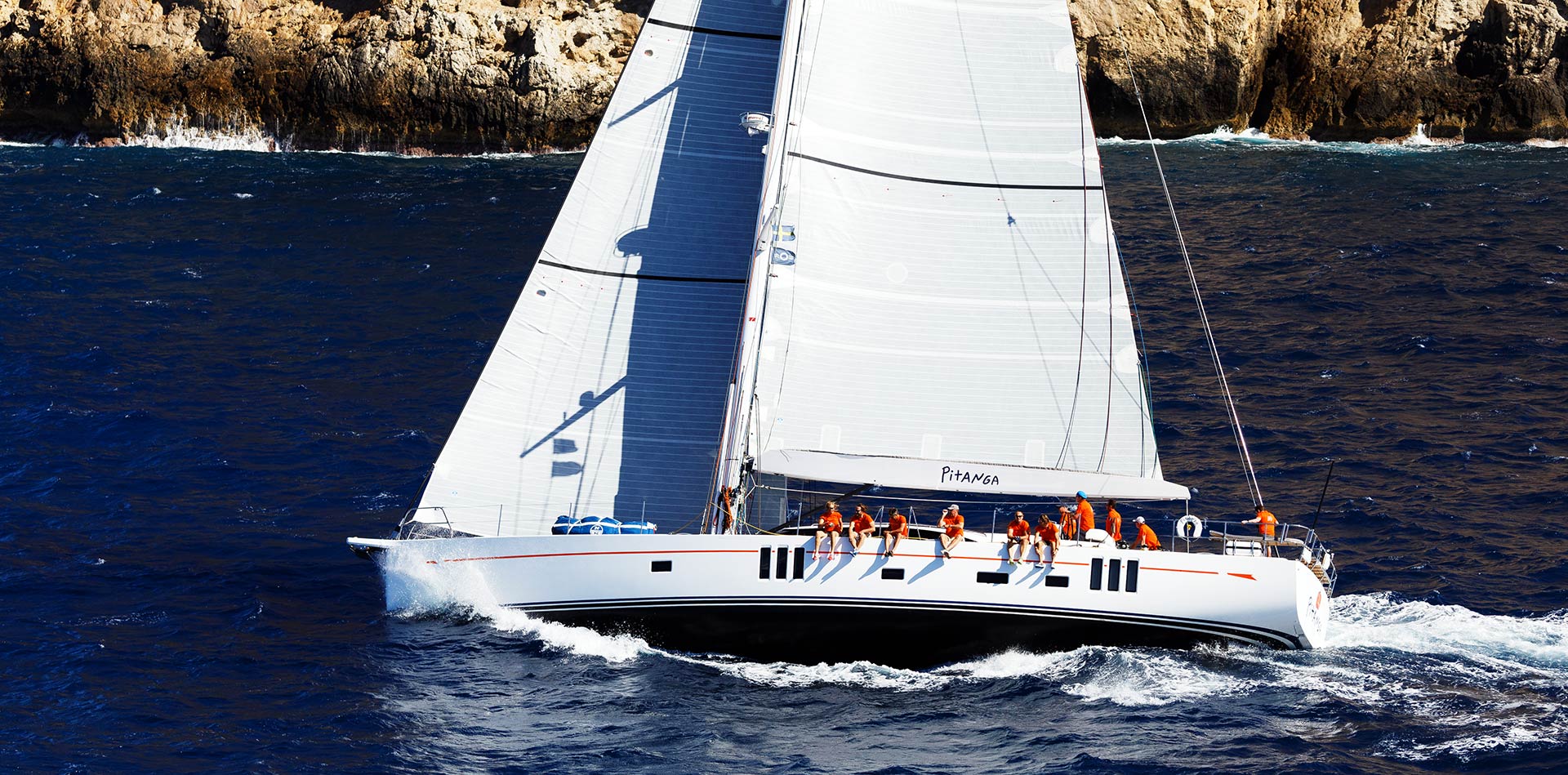
Rob: “You mention pointing ability: Although this is not necessarily top of the list for open ocean sailing you will probably have realised that the base rig configuration of the boats has tended to feature a non-overlapping blade which can of course be sheeted pretty close to really enhance upwind VMG. Of course owners can still choose to have overlapping headsails as well, but what is not so well understood is that a blade is barely less efficient when reaching than an overlapper.”
Tom: “Obviously a solid, well-appointed fitout results in a moderate to heavy displacement. This may sound like a disadvantage, but in many ways, it is a key feature as to why these yachts are such comfortable long-distance passage-makers. Heel angle is also a big driver in terms of comfort and our Oyster hull form development has had a lot to do with delivering fast passage-making speeds at modest heel angles. It’s always a game of compromise and in some respects, we’ve been happy to trade away a bit of light air VMG performance for better ocean-going attributes. Having said, we know from our own experiences that they are no slouches on the regatta circuit, having both been involved when the Oyster 825 MAEGAN won her Class and finished 2nd overall at a relatively light Superyacht Cup in Palma a few years ago.”
“Designing at those levels is pretty unforgiving”
NFS.com: “Rob, you are the brain behind Oyster although Holman & Pye did also launch a handful of designs. What would you say is the principal difference between their any your designs?”
Rob: “Holman & Pye produced a great number of designs and it was in the latter part of their era, if that’s the right word, that the Oyster DNA really found its strength. When I came in with the Oyster 56 the company was already successful, even if the 56 kicked it on in a big way. As to differences, hard to define in a few words but I was more recently out of the racing arena, with a successful Ton Cup record, and had extensive experience of round the world racing with Whitbread boats and the BT Global Challenge fleet. Designing at those levels is pretty unforgiving and it tends to help nurture an instinct that translates well into a proper seagoing cruising environment.”
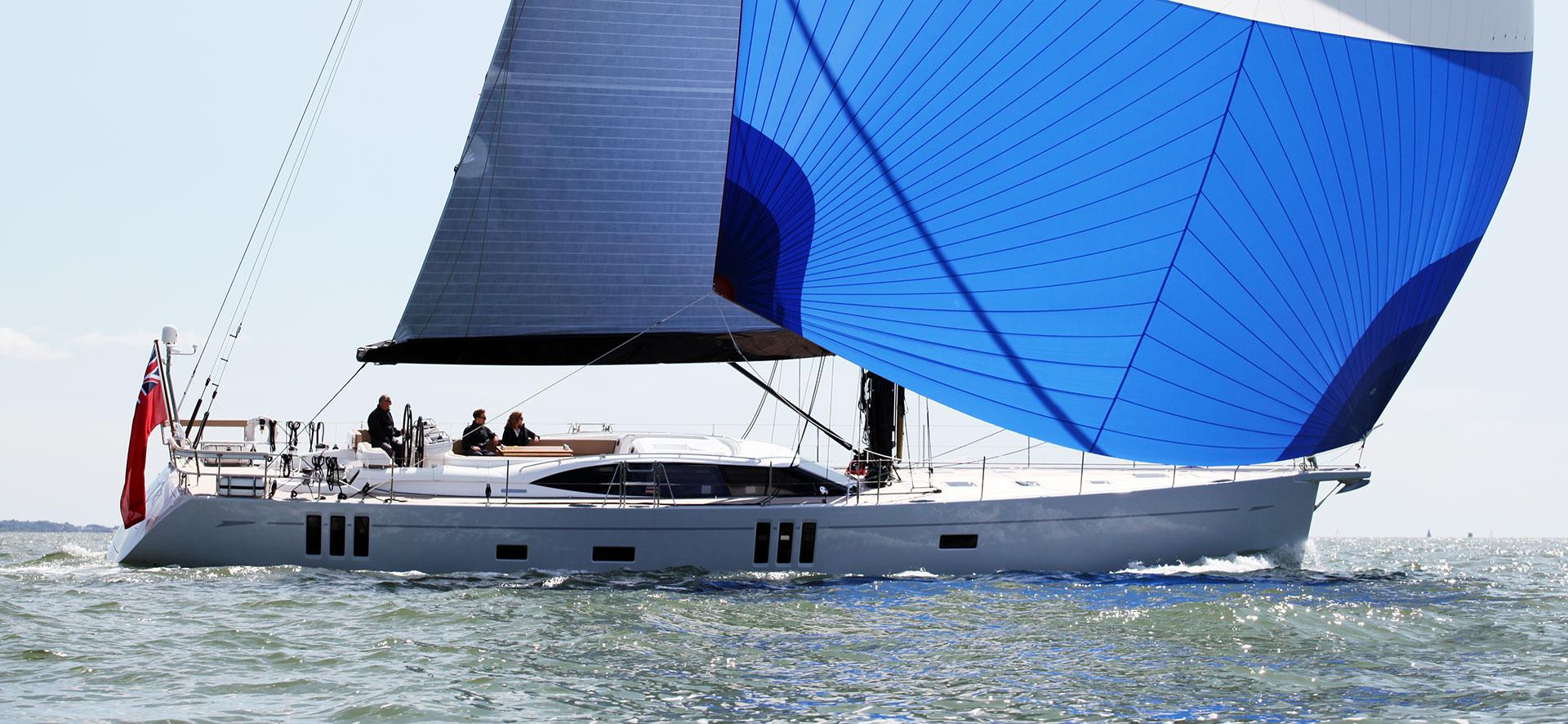
NFS.com: “I often speak with naval architects about their ideas and plans and they also told me that afterwards they sometimes don´t have too much influence on the actual execution of their plans. How is this working out for you in terms of Oyster? Are you – at least with hulls #1 – integrated into the building process and – maybe – can have a saying when it comes to production details?”
Rob: “To be honest it changes a bit with management policy, and it is different from one boatbuilding company to the next. With Oyster, initially I was very involved because there was just a core team responsible for the complete development of a project. For example with the Oyster 56 I and my team carried out the exterior design and Naval Architecture while Holman and Pye continued to be involved, at my instigation, in the interior layout and the construction (being close to the shop floor). Over time Holman and Pye’s input was replaced by an expanding in-house design team and when the Oyster Headquarters moved to Southampton this team became substantially bigger.
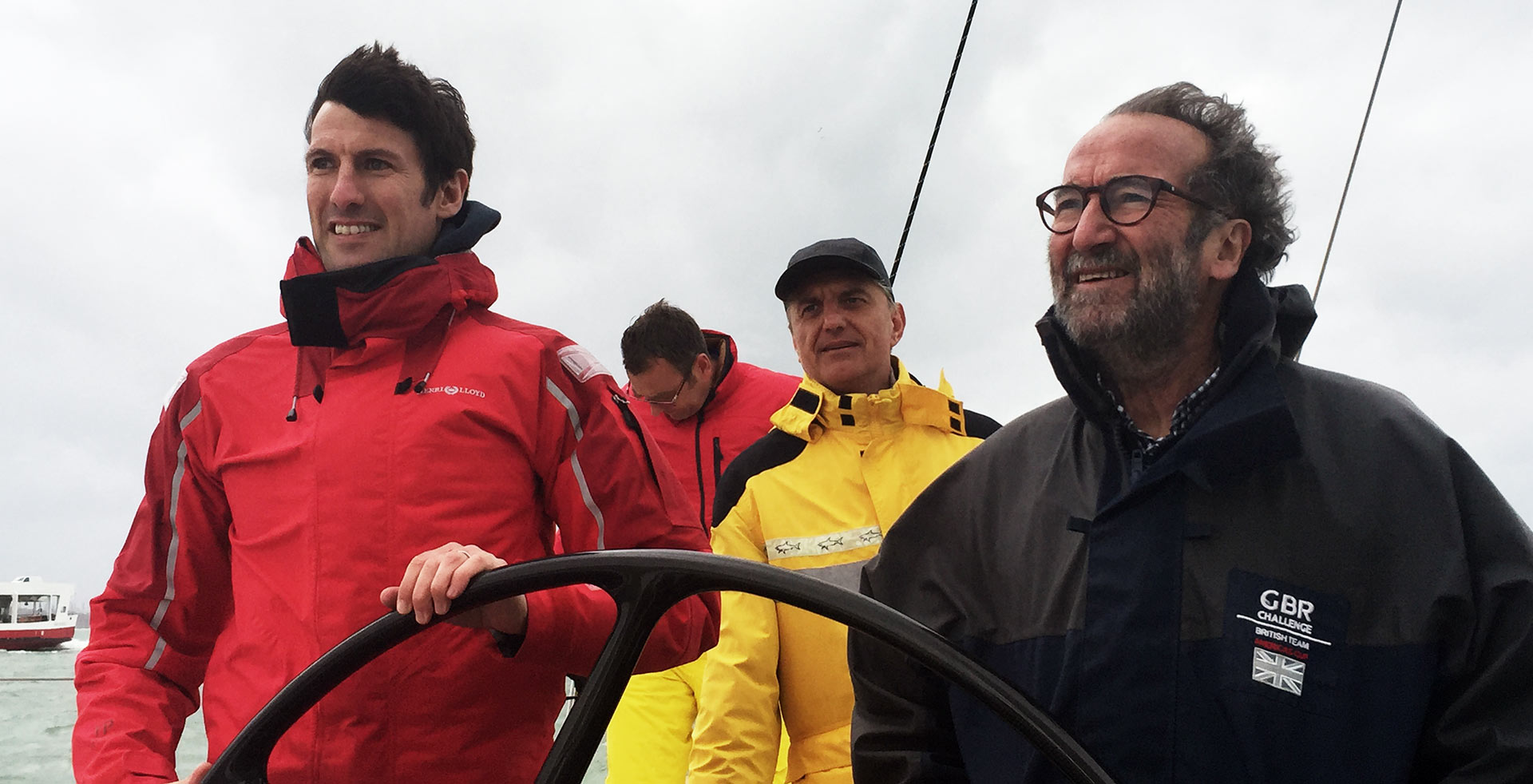
Rob: “Our role as Naval Architects and general designers remained key but substantial parts of project execution became the preserve of the in-house team. Moving forward to the past few months there has been a sea-change and we are much more involved in all the key decisions – from Naval Architecture to complete concept design, production approach, etc. It is of course very necessary for a yard such as this to have an in-house design team but with the new iteration that is developing the objective is to have a totally seamless and fertile collaboration, to the substantial benefit of the yacht owner.”
“Standards have stepped up.”
NFS.com “The Oyster 745 is an absolute dream yacht and she was absolutely blowing me away when I saw he during Boot boat show 2018. Can you go into more detail on the boat´s concept here? Which advancements or learnings from other yachts (maybe the bigger ones?) have been incorporated into the 745?”
Rob: “The 745 is of a genre that started with the 885, and in common with a changing seascape of yacht design more and more attention has been directed towards the human comfort aspects of yacht design. For example, accommodation standards have stepped up and internal volume is always under pressure, and as part of this natural evolution boats have tended to become more voluminous aft both to enhance power (as a form of free form stability) and increase spaciousness.”
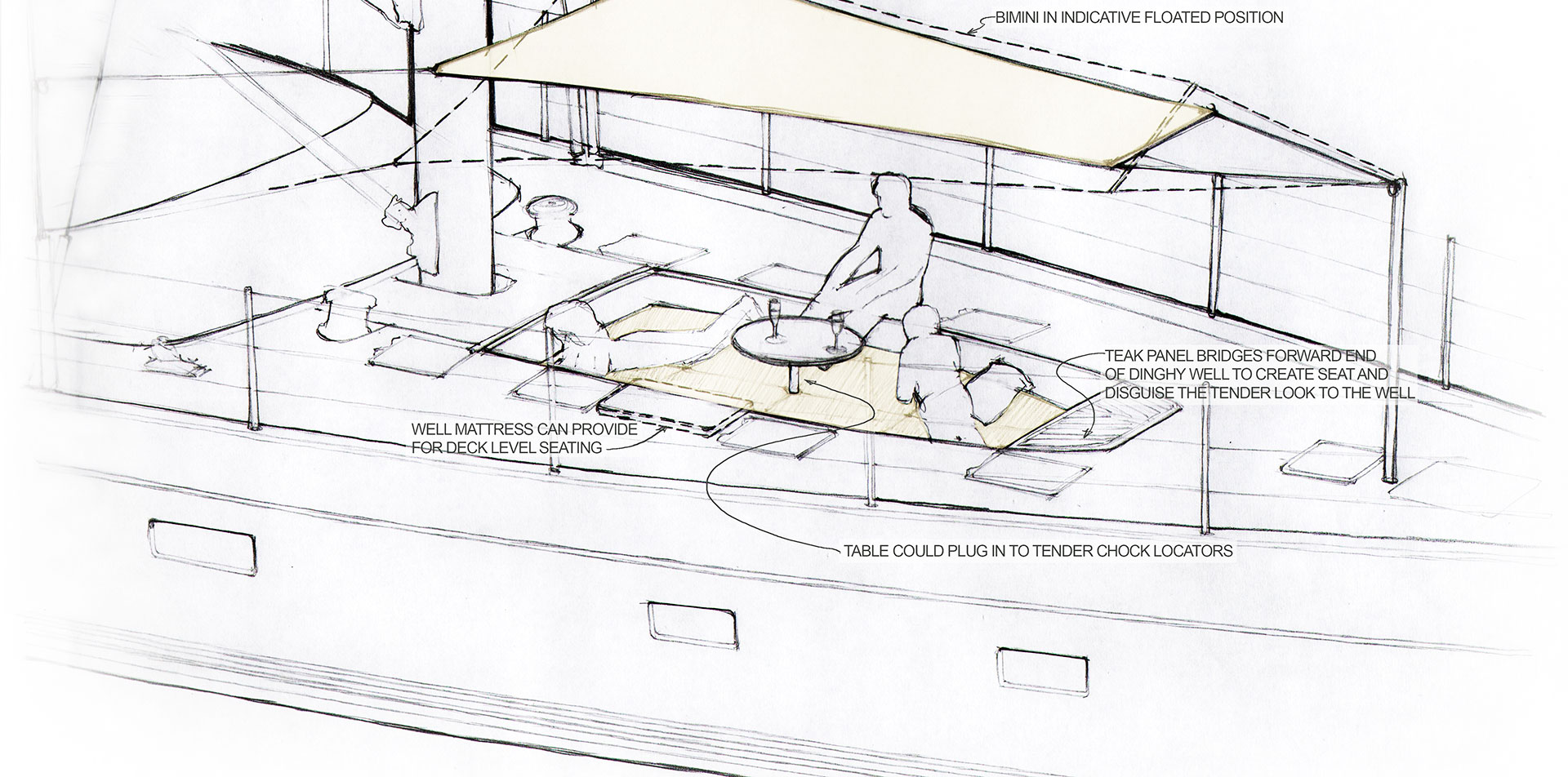
Tom: “We had the opportunity to tank test when the Oyster 885 was in development and this provided a great opportunity to investigate various potential design paths. As part of the study we looked at centreline skeg and spade rudders versus twin rudders and the results, in terms of what the latter can help deliver for a Bluewater cruising yacht really shaped the path we have taken with the design of each subsequent model.”
NFS.com: “Oyster, as well as so many other brands, switched in the 745 to a twin rudder-configuration. What was driving this decision? What are the advantages of a twin-rudder over the single rudder? The single plus skeg was a signature (of safety) for Oysters for a long time.”
Rob: “Without going into prolonged detail a twin rudder arrangement allows for more hull power aft because it maintains a level of control when heeled that would really load up a single centreline rudder as it meets with the free surface. Your point about a skeg-hung rudder as part of Oyster’s original DNA is interesting. In many ways this credo came out of the fact that quite a few Oysters damaged their rudders – or would have suffered even more severe damage if it were not for the skeg – by grounding when mooring stern-to against a shelving wall in the Mediterranean. What will be immediately obvious even to a layman is that the immersed depth of the twin-rudder package is substantially shallower than that of a centreline rudder, so this type of grounding damage never happens.”
Tom: “The benefit with twin rudders for this style of design is really about the additional design opportunities it affords you rather than the rudders themselves, but one of the main benefits is that it has allowed us to fine-tune the hull forms to deliver more sail carrying power for less ballast weight, delivering faster passage-making speeds at correspondingly lower heel angles.”
NFS.com: What is your most beloved feature in any Oyster yacht”
Rob: “It’s nice to find additional benefits in something that can seem simply utilitarian. For example, on the 885 LUSH the recessed tender well comes to life as an invaluable social space. In my initial sketch I called it a “Playzone” but Richard Hadida’s reference to it as the “Zen Room” is closer to the mark – a place to reflect, to relax, to get into deep and meaningful conversation well into the night.”
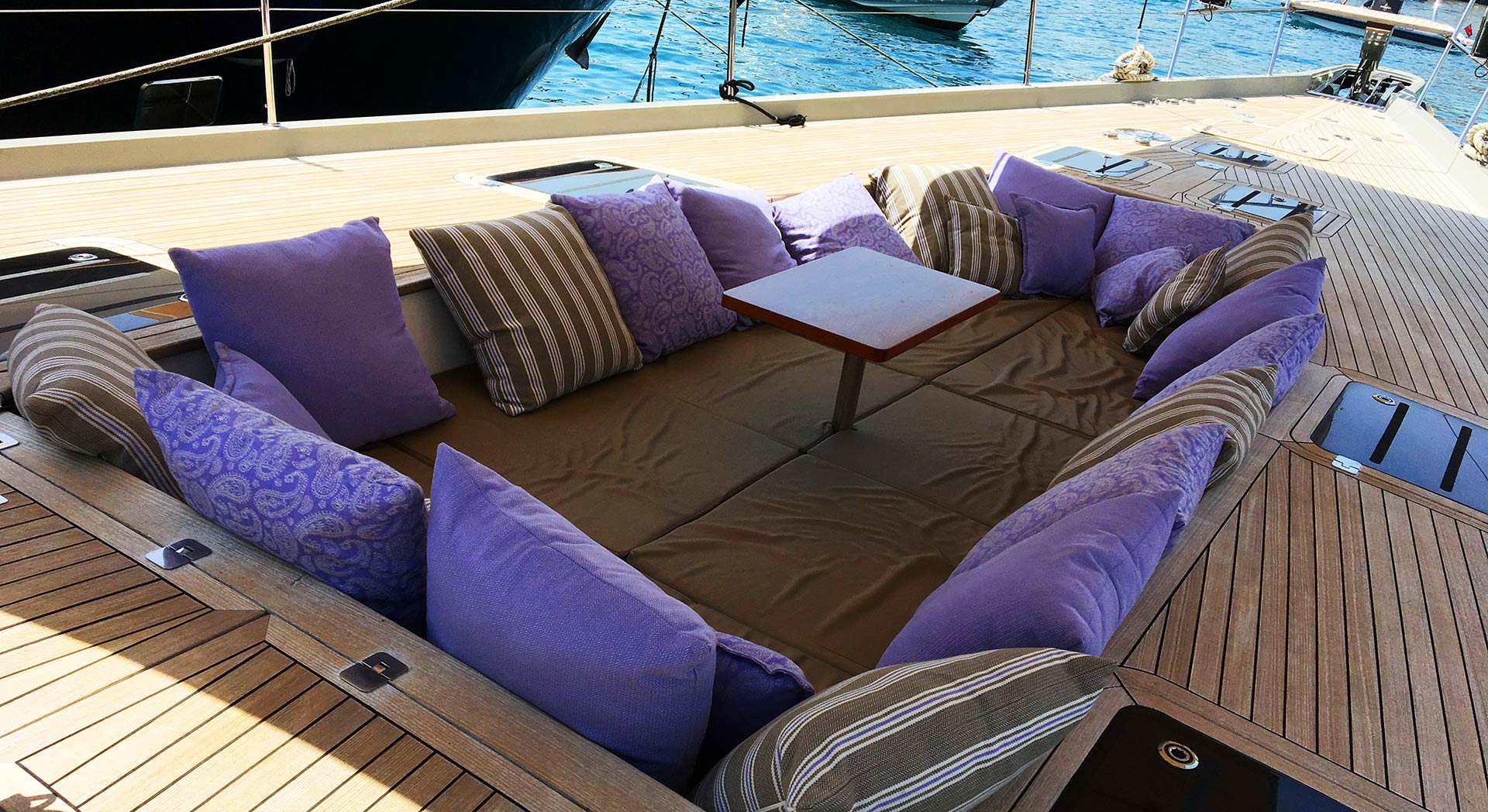
NFS.com: “Is it possible to have an outlook on the future of Oyster? Can you talk about a specific project you are currently working on? Which points did Mr. Hadida spoke about in terms of design & construction that he wants you to think about?”
Rob: “We have an extremely positive outlook on the future of Oyster. It went through a crisis but of course out of this can come positives, and already the new company has established its own in-house composite moulding operation so that it can ensure significantly improved quality control. Not only is the new facility to Lloyds-approved specification but Lloyds are approving structural arrangements and monitoring the lamination of each boat. At the same time each model is being optimised for improved construction with generally higher quality materials. Richard Hadida is very much in it for the long term and he is determined to further enhance the brand, not just trickle along at the same pace as previously. Both his heart and head are in the right place, and with no other shareholders to account to he can follow his own exciting vision for the future.”
NFS.com: “What do you think will the Oyster of the Future be looking like? Where can we expect new things to come? More push-button sailing? Foils? Rotating masts …?”
Tom: “There will be more innovation for sure! The next step in Oyster’s engineering development is silent running – No Genset – at night with air conditioning on full power. Coupled to this we are also currently exploring different hybrid options for the main engine. Plus we are investigating whether it is practical to implement ‘hydro-generation’ on an Oyster whilst the yacht is sailing. So in short there is lots coming down the line.”
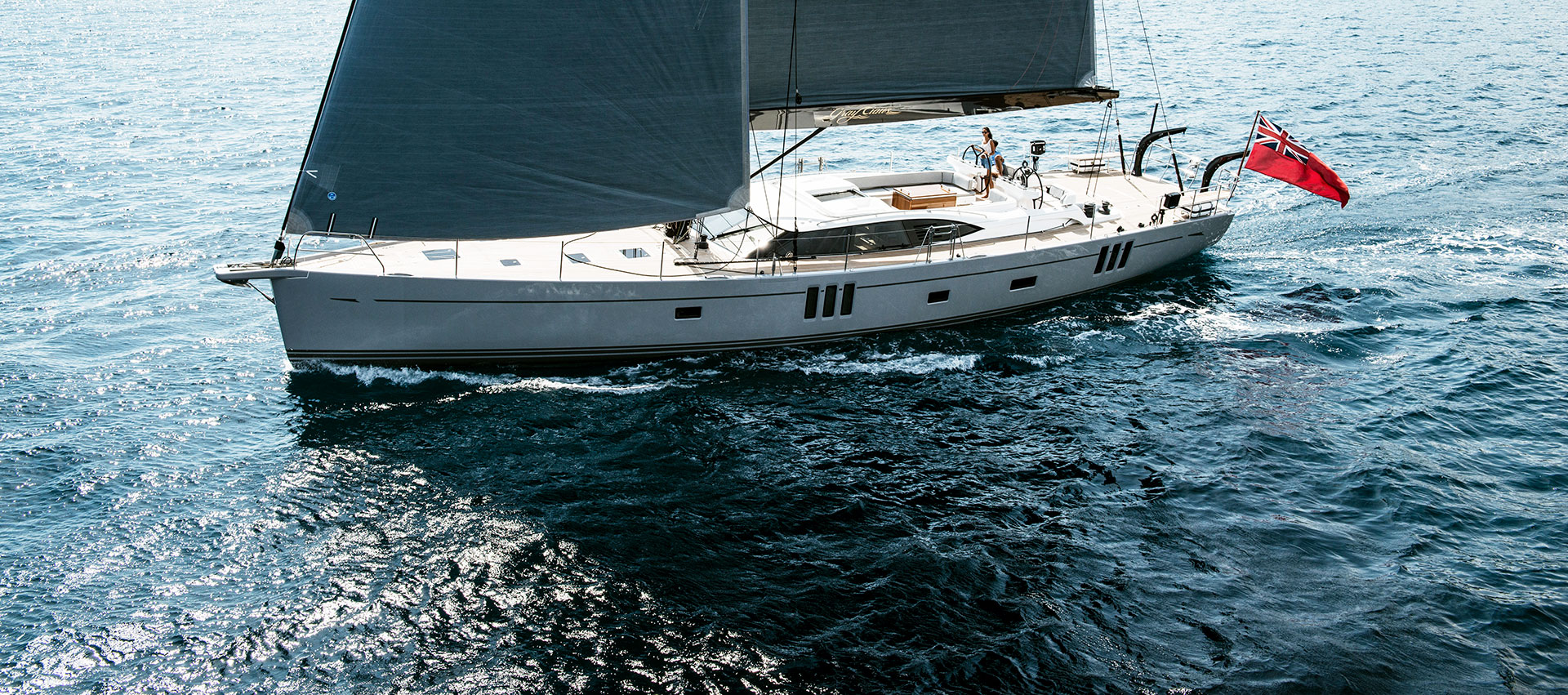
NFS.com: “Last but not least, Rob, Tom – which of all is your favourite Oyster? And why?”
Rob: “For me it´s the Oyster 56 as she was our first and it’s hard to shake off that early enthusiasm, and the 885 was particularly exciting because of the need to make most of the opportunities just below the 24 metres MCA threshold. Yes, those Oysters are hard to beat, but to be honest whatever is current for us demands so much thought that it’s sometimes hard to think of anything else as better than we are working on right now.”
Thank you so much, Rob and Tom Humphreys for this exclusive insight to the world of Oyster.
Love Oyster yachts as much as I do? You probably like these related articles:
Sailing a Rolex: Oyster 757 in Cannes
Complete walkthrough in an Oyster 745
Hallberg-Rassy 64 – blue water cruiser role model?
Pictures with kind permission by Rob & Tom Humphreys and Oyster Yachts
